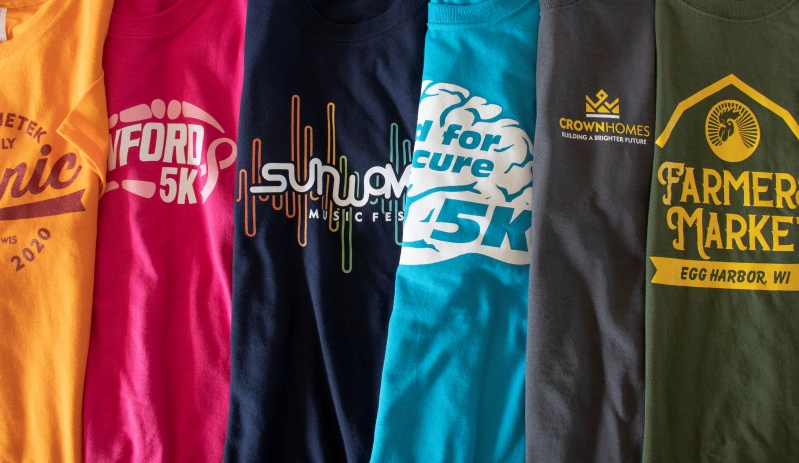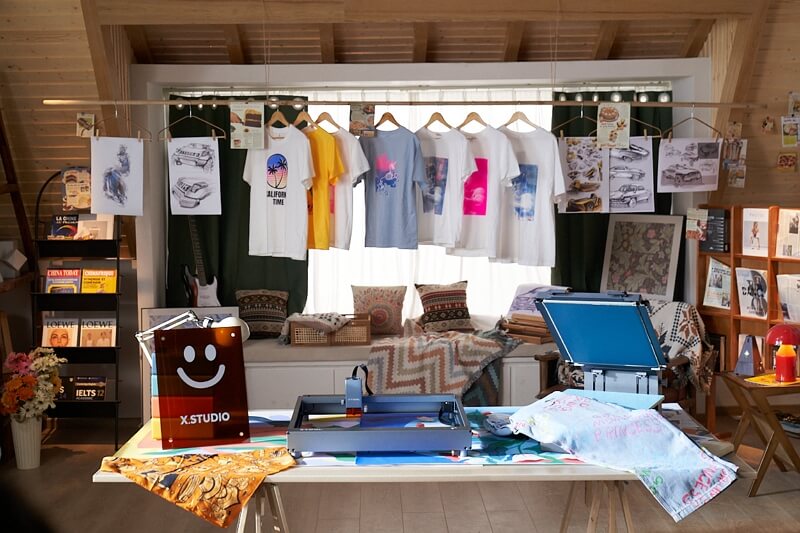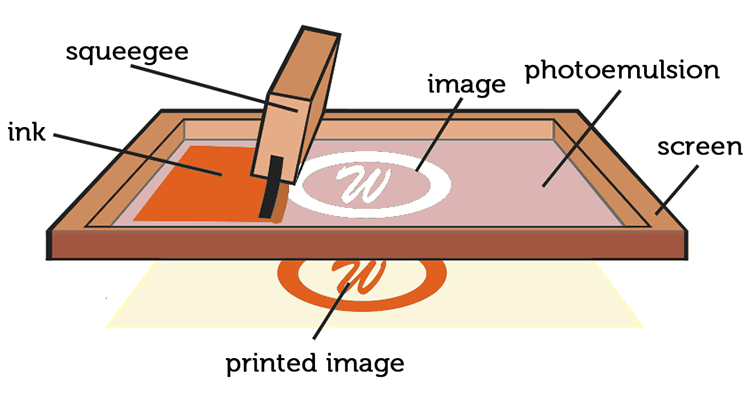Fascination About Tx Tees
Fascination About Tx Tees
Blog Article
The 5-Minute Rule for Tx Tees
Table of ContentsThe Best Strategy To Use For Tx TeesAll about Tx TeesGet This Report about Tx TeesThe Single Strategy To Use For Tx TeesTx Tees - TruthsThe Best Strategy To Use For Tx Tees10 Easy Facts About Tx Tees Shown
That brings your overall to roughly $1,900 gross and delivery. Include up other costs, like the variety of energies it requires to run the store and the price of ink and emulsion per design. custom t-shirt design. Take the print listed below as an example. This is a one-color photo, so the price of ink per tee shirt is around 20 cents.The emulsion should just be a few cents considering that you 'd only require to coat one display for this work. Generally, printers try to make up to 45% revenue on a print task.

With DTF, you can publish a handful of t-shirts, or simply one. Both screen printing and DTF have their particular niches in the globe.
The 8-Minute Rule for Tx Tees
The ideal way to know? Ask around and see what print stores like yours are doing. custom monograming. Try both out and see which you like far better
When you're choosing what type of printing technique to make use of for printing your artwork layouts on your garments, it's important that you understand the distinctions in between these two techniques so you can make best use of results while decreasing prices. Display printing is one of the most generally used method for printing styles on textiles.
DTG printing is additionally called spot or direct to garment printing because it prints only what is needed as opposed to making a screen as display printers do. https://allmyfaves.com/txtees02?tab=TX%20Tees. Screen printing functions by screen filler squeegee screen printing ink screen mesh screen, after that transferring the picture to garment using warmth and/or pressure
The DTG printer makes use of special dye-sublimation inks that are applied right into a pre-designed picture by an electronic printing system. The inks enter into the textile, enabling dynamic shades and phenomenal detail. It's also recognized as spot or straight to garment printing because it publishes only what is required rather than making a screen as screen printers do.
Getting The Tx Tees To Work
It's much quicker - you can publish a fullcolor image in minutes, as opposed to hours for screen printing. Second, there's no established up time or costs included - you can publish any kind of layout you such as, without having to create a screen first. Third, there's no waste - because screen printers display print one layout at a time, they need to evaluate each shade separately.
The paper is extremely costly and can just be used once. Once it's printed on, it needs to be thrown out. - The initial purchase rate is reduced than the ahead of time investment of DTG printers- You can print multi-color designs one display at once rather than needing to publish each shade independently like DTG printing.

Not known Incorrect Statements About Tx Tees
Instead of making use of screen mesh as screen printers do, color sublimation printers make use of laser innovation to move your photos onto garments page or paper. A warm process moves the color from its solid-state directly into the gas stage which consequently integrates it onto fabric substrates when they are quickly warmed to high temperature levels under high stress.
Sublimation printing is environment-friendly. It uses less water than screenprinting, and since it doesn't involve the use of harmful solvents, it's risk-free for all kinds of apparel. The dye sublimation inks are likewise unsmelling when healed, unlike screen printers that utilize unsafe chemicals throughout the screen printing process that leave an undesirable smell.
They additionally save money on costly equipment like exposure devices because color sublimation printers do not call for a UV direct exposure device or a flash cure oven that is commonly made use of in display printing (screen printing shop). What is direct to garment printing (DTG Printing)? DTG printing is a digital screenprinting process that prints directly onto fabric using specialized inkjet printers
Rumored Buzz on Tx Tees
DTG printing provides lots of benefits over conventional screenprinting, consisting of the capability to print photographic quality photos, higher color vibrancy, and the capacity to publish styles on darker fabrics. DTG printers function by heating up the fabric ink till it becomes a gas. The gas after that permeates the fabric, bonding with the fibers to develop a long-term print.

Display printers merely prepare their display after that begin publishing up until they lack item or ink.- There is a wide range of experienced display printers all over the world, which can be useful for novices. - It's a slower process - screen printers frequently have to wait on the ink to completely dry prior to they can publish the next shade- Screen printers call for manual work, so there's a greater understanding contour and it takes longer to generate a top quality design- Display printing isn't as precise as DTG printing, so you may get some "blood loss" of shades from one part of the image onto an additional otherwise done appropriately.
Top Guidelines Of Tx Tees
Nonetheless, rather than making use of screen mesh as display printers do, dye sublimation printers make use of laser innovation to move your pictures onto garments or paper. A warmth procedure transfers the color from its solid-state directly right into the gas stage which in turn integrates it onto fabric substratums when they are swiftly heated up to heats under high stress.
Sublimation printing is eco-friendly. It utilizes much less water than screenprinting, and because it does not include making use of unsafe solvents, it's safe for all kinds of garments. The dye sublimation inks are likewise unsmelling when cured, unlike screen printers that make use of hazardous chemicals throughout the screen printing procedure that leave an unpleasant odor.
They likewise conserve money on expensive devices like exposure units given that dye sublimation printers do not call for a UV exposure device or a flash cure oven that is commonly used in screen printing. What is direct to garment printing (DTG Printing)? DTG printing is an electronic screenprinting process that prints directly onto material utilizing specialized inkjet printers.
3 Easy Facts About Tx Tees Explained
DTG printing supplies several advantages over traditional screenprinting, including the ability to publish photo quality images, better shade vibrancy, and the capability to print layouts on darker textiles. DTG printers function by heating up the fabric ink till it turns into a gas. The gas then penetrates the textile, bonding with the fibers to produce a long-term print.
Report this page